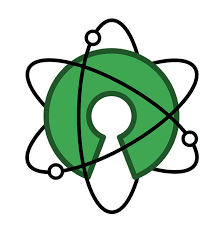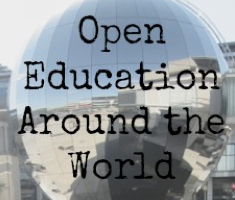Webinar on Open Education and Open Science: a summary
 This is a summary of a recent Webinar in which Guido Scherp, the Coordinator of “Leibniz Research Alliance Science 2.0” (LRA) and Lorna Campbell, one of our Advisory Board members and expert in open education, answered some questions about the recent International Open Science Conference 2017.
This is a summary of a recent Webinar in which Guido Scherp, the Coordinator of “Leibniz Research Alliance Science 2.0” (LRA) and Lorna Campbell, one of our Advisory Board members and expert in open education, answered some questions about the recent International Open Science Conference 2017.
The Conference, which had a special focus on OERs, was organised by Guido, and Lorna was an invited speaker with a keynote on “Crossing the Field Boundaries: Open Science, Open Data & Open Education”.
I started by asking Guido about the purposes of the “Leibniz Research Alliance Science 2.0” (LRA).
Guido: “LRA was founded in 2012 as an answer to the changing context of research, in particular the increasing digitalisation: researchers are now using blogs, twitter, social media, academic social networks and other various online-tools to share or conduct research”, a phenomenon that has been named ‘Science 2.0’. These dynamics are changing the scientific system by producing new outputs and new publication formats. The scope of LRA is to examine the effects of Science 2.0 and Open Science on research and publication processes and to provide strategic instruments for interdisciplinary research among member institutions that are open for collaborations with universities and other research institutions.
Guido then explained the difference between Science 2.0 and Open Science with the example of using Google Docs to collaboratively write a research paper, which is then published in a closed access journal. This would be an example of Science 2.0 which is not, however, Open Science. Of course Science 2.0 fuels Open Science, and vice versa.
Of particular interest for the Open Education Working Group was the thematic focus of the conference, which was on OERs. Hence my question on the reasons for this particular choice.
It was interesting to learn that not only within LRA there is a special interest group Open Science in Education, but also some partners of the LRA have educational background and are involved in OER-related projects. For example one partner is building the OERInfo platform, a central hub for OERs in Germany.
Lorna highlighted that it is indeed very timely to bring the Open Science conference under the umbrella of Open Education this year, as 2017 has been designated as the Year of Open, as a result of a series of anniversaries that are taking place this year. For example it is the 15th anniversary of the Budapest Open Access Initiative and the first Creative Commons licenses, the 10th anniversary of the Cape Town Open Education Declaration and the 5th anniversary of the Paris OER Declaration.
We also talked about the role of Wikipedia and Wikimedia in Open Education.
The role of resources like Wikipedia and all Wikimedia tools is very important in Open Education. Lorna nicely explained that “…certainly here in the UK we have an increased number of Wikimedia residents working at not just galleries and museums, but also at Universities […] and that is really about embedding open knowledge in higher education, so that Wikimedia effectively becomes a digital literacy tool and an open knowledge tool. So it’s not just about using the information out there but it is also about creating open knowledge by editing Wikipedia, using Wiki data etc…”.
The next question was about the value of Open Education in Open Science.
For Guido, the most important element in this discourse is that Open Science practices must be taught: scientists (and the public) must learn Open Science practices and OER can be used for this. So the main point is to “apply open science practices when you teach open science”.
Lorna agreed that there are many commonalities between Open Science and Open Education, and that each can benefit from the other. “Certainly in terms of Open Education there’s a lot that Education could give from having greater access to open data of all kinds and I think that if students and teachers have got access to open science data for example, that’s an immensely powerful learning resource. Javiera and Leo through this working group have written a very important report on Open Data as OERs and I certainly think that’s one area in which Open Science can contribute significantly to Education. But of course there’s the other way and I think Open Education has a lot to offer to Science Education and Guido spoke about the importance of public engagement, and I think that’s an important area”. Lorna went on describing a recent project at Edinburgh University, in which students were involved in public engagement and created some OERs.
I then asked Lorna, referring to her keynote, if she thinks the boundaries between Open Science and Open Education are still quite rigid and, in that case, how we could contribute to loosen them up.
Lorna’s insight was, as usual, really interesting: “Well, I think this conference is exactly the way we can start to break down these boundaries. I think there is a tendency that we work in our ‘Open Silos’… we have Open Education, Open Access, Open Science, Open Data… and, you know, we are all working in one thing and making good progress, but there’s not quite enough inter-connection, I think, between these areas. So anything that helps break down these barriers could be a good thing, and especially conferences, like this one, that really extends the welcome to people working in education are really, really important” […] “A lot of this has to do with keeping these communication channels open, and remembering that we do have a lot that we can learn from each other. I certainly tend to see Open Education, Open Science, Open Access, Open Data as all part of an Open Landscape and we just need to go ahead, learn how to navigate them and reach across these boundaries”.
So, that was a lovely share of experiences and insight from both Lorna and Guido, which definitely contributed to a better understanding of what Open Science and Open Education have in common, and also facilitated critical reflection on what us, Open Educators, need to learn from Open Scientists (and vice versa).
It is particularly interesting to see that the Open Landscape seems to be inhabited by several ‘Open Silos’, but the boundaries are definitely getting more and more blurred.
 Open Education Working Group
Open Education Working Group 



Leave a Reply